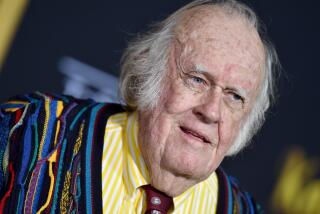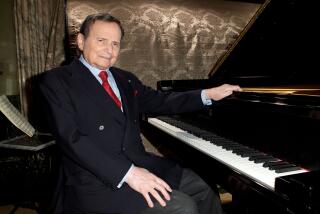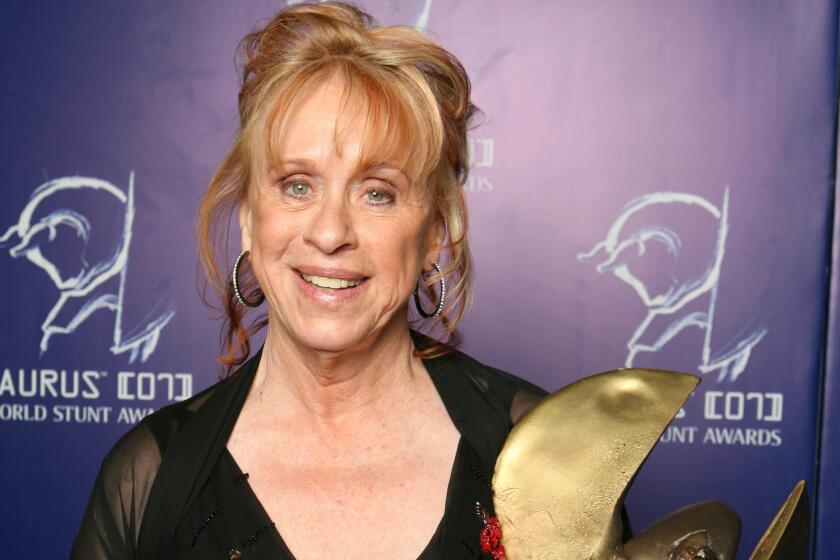Clement A. Finch dies at 94; pioneering hematologist
Dr. Clement A. Finch, a University of Washington hematologist who became known as Mr. Iron because of his pioneering research on the metabolism of that crucial metal, died June 28 at his home in La Jolla. He was 94, and the cause of death was not revealed.
Iron plays a key role in many aspects of bodily function but is most important as a component of hemoglobin, the oxygen-carrying component of red blood cells. When Finch began his work, clinicians could diagnose iron deficiency anemia but were in the dark about its causes.
Studies by Finch and others showed that anemia could be caused by three different mechanisms: inability of bone marrow to produce red blood cells, the production of defective red cells and the abnormal destruction of red cells elsewhere in the body. Those studies showed how to distinguish among the causes.
Finch was among the first researchers to use radioactive isotopes of iron to trace its movement through the body. By tracking its progress, he could show, for example, how the female body worked to replace iron lost through menstruation.
He also grew foods tagged with radioiron to better understand how iron in the diet is assimilated into the body. His studies were crucial in helping the World Health Organization, for which he was a frequent consultant, make dietary recommendations for developing countries to help prevent anemia and poor development.
Finch compiled his research into a seminal text, “The Red Cell Manual,” that is still widely used by physicians.
Clement Alfred Finch was born July 4, 1915, in Broadalbin in upstate New York, the son and grandson of country physicians. His interest in medicine developed from accompanying his father on house calls.
Although the family was of limited means, scholarships allowed him to attend Union College and the University of Rochester, where he received his medical degree in 1941. He performed his internships and residency at hospitals in Boston, primarily Brigham & Women’s, and planned to enter the Army upon completing them. He had planned to be a surgeon, but his interest in blood was piqued by a residency in internal medicine, which exposed him to hematology.
He was rejected by the military, however, because he had contracted pneumonia and was still recuperating. Instead, he took a fellowship with Joseph F. Ross at Boston University, where he worked on ways to prolong the life of donated blood, which at the time could be stored for only about two weeks. That research was valuable for the military because of the need for blood for the wounded.
The next year, he returned to Brigham, where he was placed in charge of hematology research and the hematology labs. During his first studies there, interns had performed most of their own blood tests. Finch helped set up a system in which the work was done by technicians who were more proficient at it.
While there, Finch and his colleagues performed initial studies on patients with hemochromatosis, in which abnormal amounts of iron accumulate in the body, damaging internal organs. They demonstrated that the condition could be alleviated by bleeding the patient — a process known as phlebotomy — to remove excess iron. Phlebotomy had been widely used for a variety of conditions in the early days of medicine when no other treatments for disease were available, but this proved to be one of the first successful applications.
In 1949, he was recruited to the then-new University of Washington Medical School, where he spent the next 60 years. He chose it, in part, because of his love of mountain climbing — nearby peaks were abundant. .
A free spirit, the 6-foot, 5-inch physician was often spotted riding around campus on his Vespa motor scooter. He was once disciplined by the Medical Executive Committee for conducting rounds wearing lederhosen. On another occasion, when he had forgotten his keys, he climbed the outside of the Health Sciences Building to get into his office.
Finch is survived by his third wife, Genia; two sons, Clifton of Olympia, Wash., and Derel of Seattle; two daughters, Carin Finch Barber of Nunam Iqua, Alaska, and Lisa Finch of Seattle; and three grandchildren.
More to Read
Start your day right
Sign up for Essential California for the L.A. Times biggest news, features and recommendations in your inbox six days a week.
You may occasionally receive promotional content from the Los Angeles Times.






